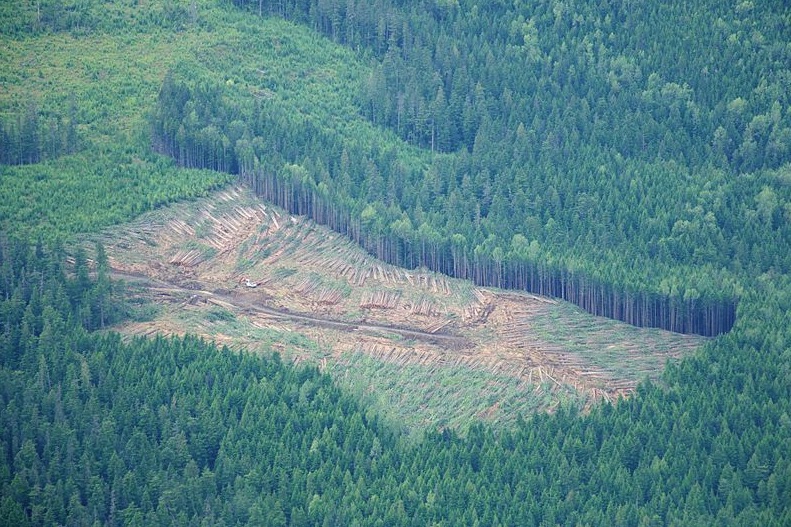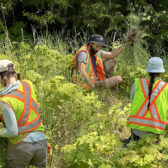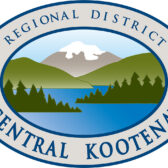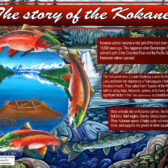Province needs to put ecological sustainability before financial sustainability in allowable annual cut: Valhalla Wilderness Society
A reduction in the allowable annual cut for a tree farm licence north of Castlegar near Arrow Lake might be sustainable forestry, but it doesn’t do much for the environment, says a local environmental group.
Valhalla Wilderness Society’s director Craig Pettittt said that the allowable annual cut (AAC) determination by the Province’s deputy chief forester is what the government says it is, a plan to maintain “sustainable forestry” for Tree Farm Licence 23 (TFL), located northwest of Castlegar, near Arrow Lake.
The new AAC for the TFL is 382,800 cubic metres. This is a seven per cent reduction from the previous AAC, while remaining above the average annual harvest level of the past 12 years.
“Obviously they do not mean ecological sustainability,” said Pettitt. “They mean sustaining the profits of (logging companies) while it also logs TFL 3 and Slocan Valley watersheds.”
Pettitt characterized TFL 23 as a “series of huge valleys that have been completely gutted of any rare, ancient, wet inland temperate rainforest that is economically accessible.”
The new level reflects adjustments made to account for the removal of the Incomappleux Valley Conservancy area and to account for lower harvest performance on slopes greater than 50 per cent.
However, the area is also a large part of the home of the Central Selkirk Mountain Caribou herd, now on the brink of extinction with only 25 animals remaining.
“The recently protected Incomappleux Conservancy shows what a magnificent forest there was, but about two-thirds of the valley was massively clearcut,” Pettitt said.
The only intact remnant found in TFL 23 is now owned by Interfor, he added. Interfor also has TFL 3 to the south, as well as volume-based Forest Licence A20192 which covers a large portion of the Slocan Lake drainages.
The new AAC determination reduced the cut on TFL 23 by seven per cent, but Pettitt said it will not reduce logging in the TFL because Interfor had not been logging its full AAC for the last 12 years.
“When a major B.C.-wide company … with its huge corporate resources foregoes 90,000 cubic metres of economically viable wood, it is a sure indication that the annual rate of logging is too high and needs to be reduced dramatically,” said Pettitt.
Reductions were also applied to account for unstable and potentially unstable terrain, increased wildlife-tree retention, and the disposition of 90,000 cubic metres of unharvested volume.
Delving deeper
In the rationale statement for the AAC determination, the province said Interfor confined its logging mostly to moderate slopes, and did not log enough on steep slopes using “alternative methods” (such helicopter logging).
Therefore, the new AAC stipulated only 80 per cent of the 382,000 cu. m. can be on slopes less than 50 per cent, with 20 per cent of the cut from steeper slopes.
“The fact that the company has been under-cutting on slopes greater than 50 per cent shows that there is a shortage of economically and environmentally viable wood available on these slopes,” said Pettitt. “This is a strong indication that forest on these steep slopes should be removed from the AAC, but rather the chief forester is, in effect, forcing the company to log on these slopes for 20 per cent of its cut.
“This is a classic example of how unsustainable rates of logging over many years drives logging companies to more damaging practices in more sensitive areas. More logging on steep slopes will likely mean more damage to our watersheds such as stream channel stability, erosion and damage to fish streams.”
Currently unavailable
In the cumulative effects policy — where the combined impacts of various kinds commercial and industrial use are considered — the rationale statement for the latest AAC determination for TFL 23 had a cumulative effects assessment was “not currently available,” said Pettitt.
The policy said the watershed hazard assessment rated the hazard class for aquatic ecosystems as relatively high, the sediment hazard was relatively high and the riparian hazard was also high.
Yet the new ACC requires Interfor to log on steeper slopes for 20 per cent of its cut, Pettitt noted.
“But, never mind that, the chief forester writes that Interfor can consult the Kootenay-Boundary Plan and the Forest and Range Practices Act for advice on how to mitigate the damage,” he said.
The new AAC also stipulates the logging of 19,100 cu. m. of old forest — any forest over 140 years old.
“Companies can and do sometimes log all of a watershed that is economically feasible,” said Pettitt. “There should have been enough AAC reduction to keep logging off of steep slopes, and to quit logging old-growth.
“This Tree Farm Licence is lucky in that all its 13 First Nations agreed to implementing the old-growth deferrals recommended by the government’s Old Growth Technical Advisory Panel (TAP). However, the AAC Rationale statement says that, while the deferrals are being honoured, they were not removed from the Timber Harvest Land Base because they haven’t been formally designated.”
A cut below
The allowable annual cut is based on timber volumes but there is a drastic disconnect from the impacts on the land or on people, said Pettitt.
“AAC determinations across the province, reported to the public in volumes to be logged, do not disclose the fact that past AAC’s have given us a province-wide patchwork of clearcuts, with whole valleys gutted of their commercially valuable forest,” he said. “They have given us landslides into rivers and streams that have contributed to disappearing salmon. They have left steep slopes with landmine clearcuts ready to slide onto rivers, roads and houses, given a future of severe storms caused by climate change.”
Pettitt pointed to the disappearance of the spotted owl, whole herds of Mountain Caribou and over 2,000 species at risk as part of that legacy.
“As logging companies liquidate the largest trees growing at lower elevations, in fertile, wet soils on economically accessible terrain, they are increasingly forced to log smaller trees on steep slopes,” he said. “As a result, to keep up the timber supply volumes that logging companies demand to stay profitable, more land must be logged to reach those volumes, and this means more damage and more impact on already beleaguered wildlife, more impact to humans, relentless reduction of our carbon sequestration capacity.
“This has, through successive AAC determinations over decades, been falsely promoted as ‘sustainable.’ What we have seen on the ground of this grim sustainability includes how, when the big trees were mostly gone, the government with its AAC forced logging into our domestic watersheds and refused to consider that steep slopes to be logged above people’s homes put water and people in danger.”
The government pacifies public demands for forest protection by making promises of future reforms, Pettitt concluded.
“(A)ll the while the promises themselves are being chainsaw-ed to meet the AAC. The chief forester who sets the AAC is constrained by strict laws and responsibilities to the logging corporations,” he said. “Changing the AAC to represent the ‘new paradigm’ that the provincial government has promised must happen at the highest level of government.”

























